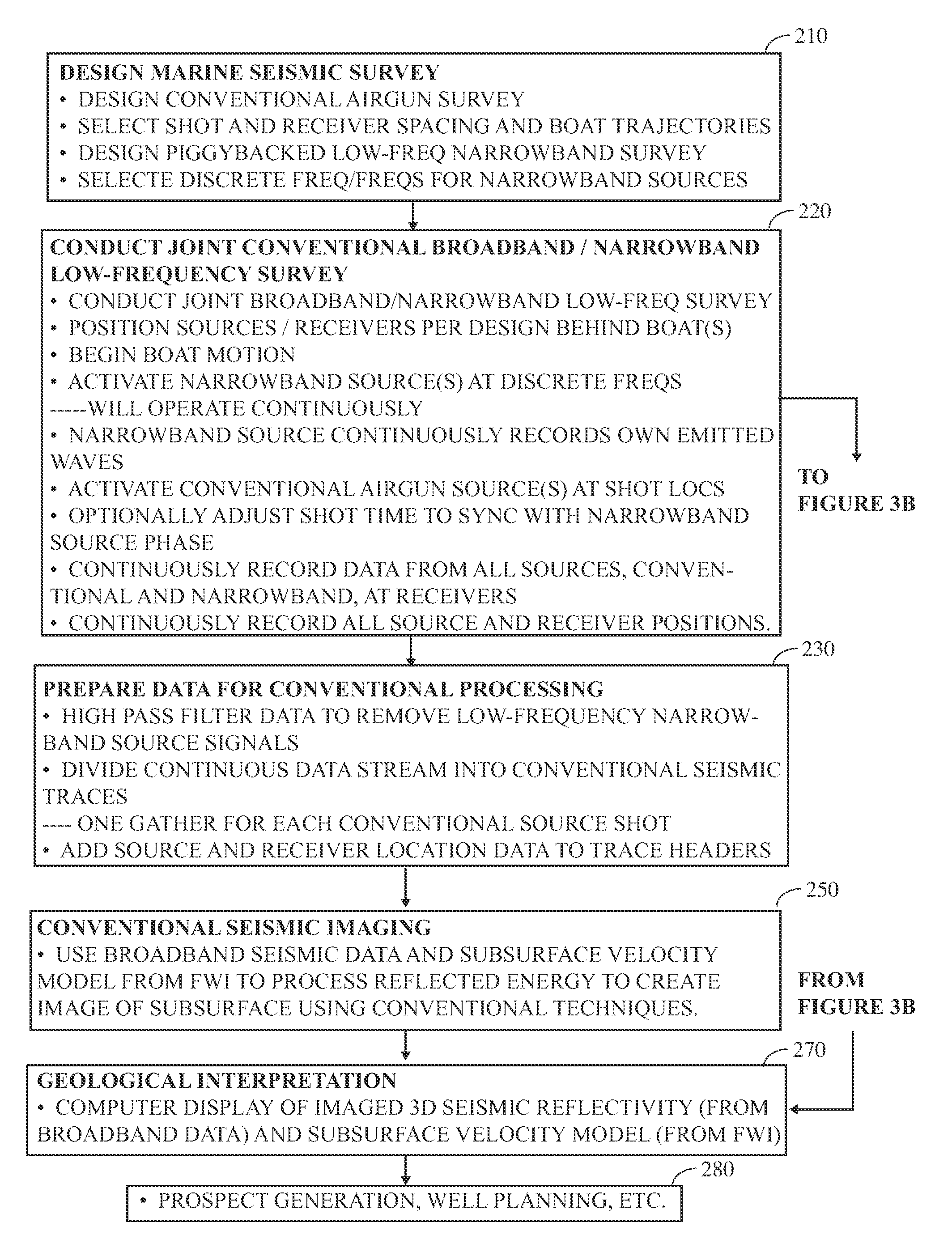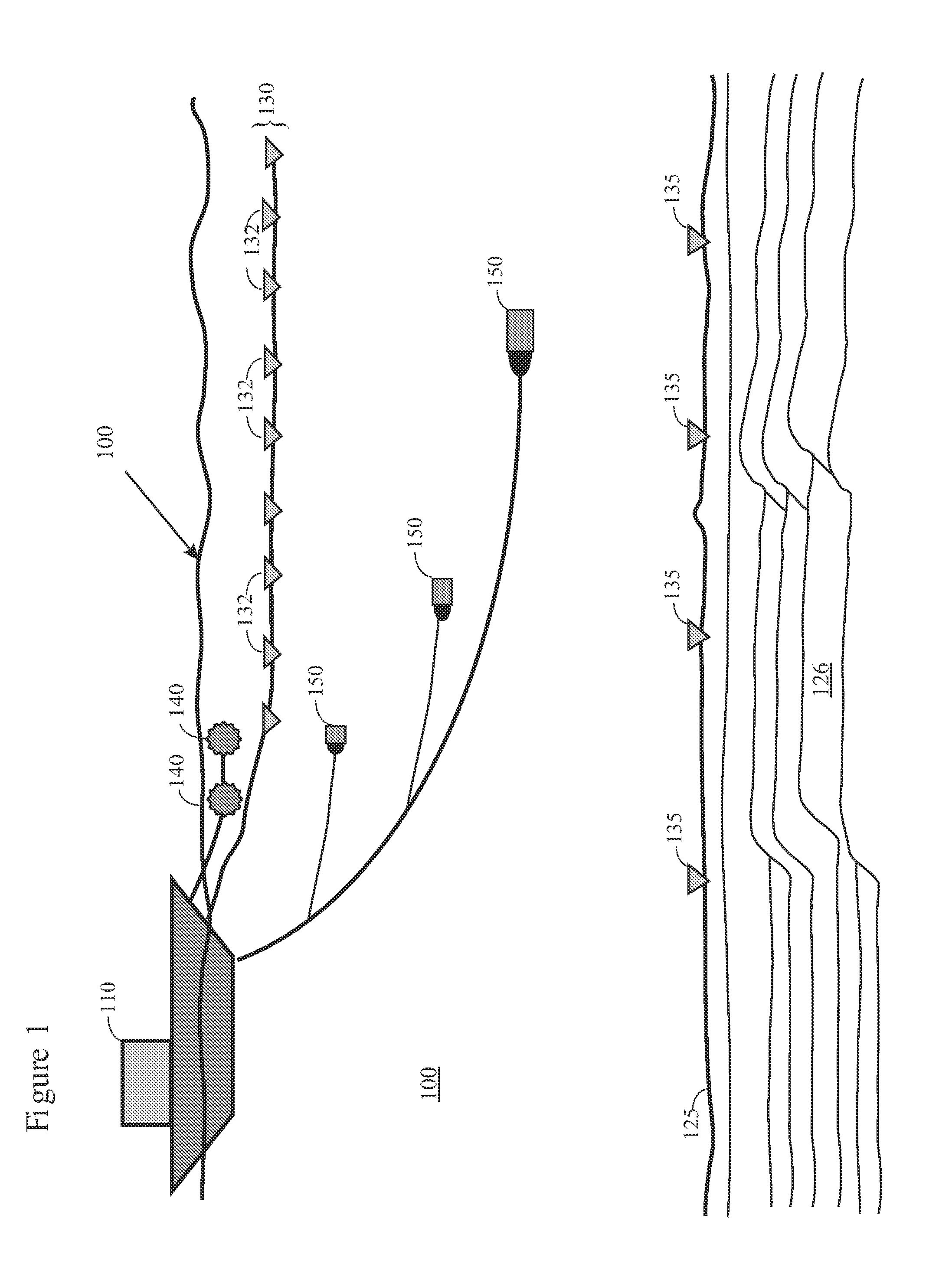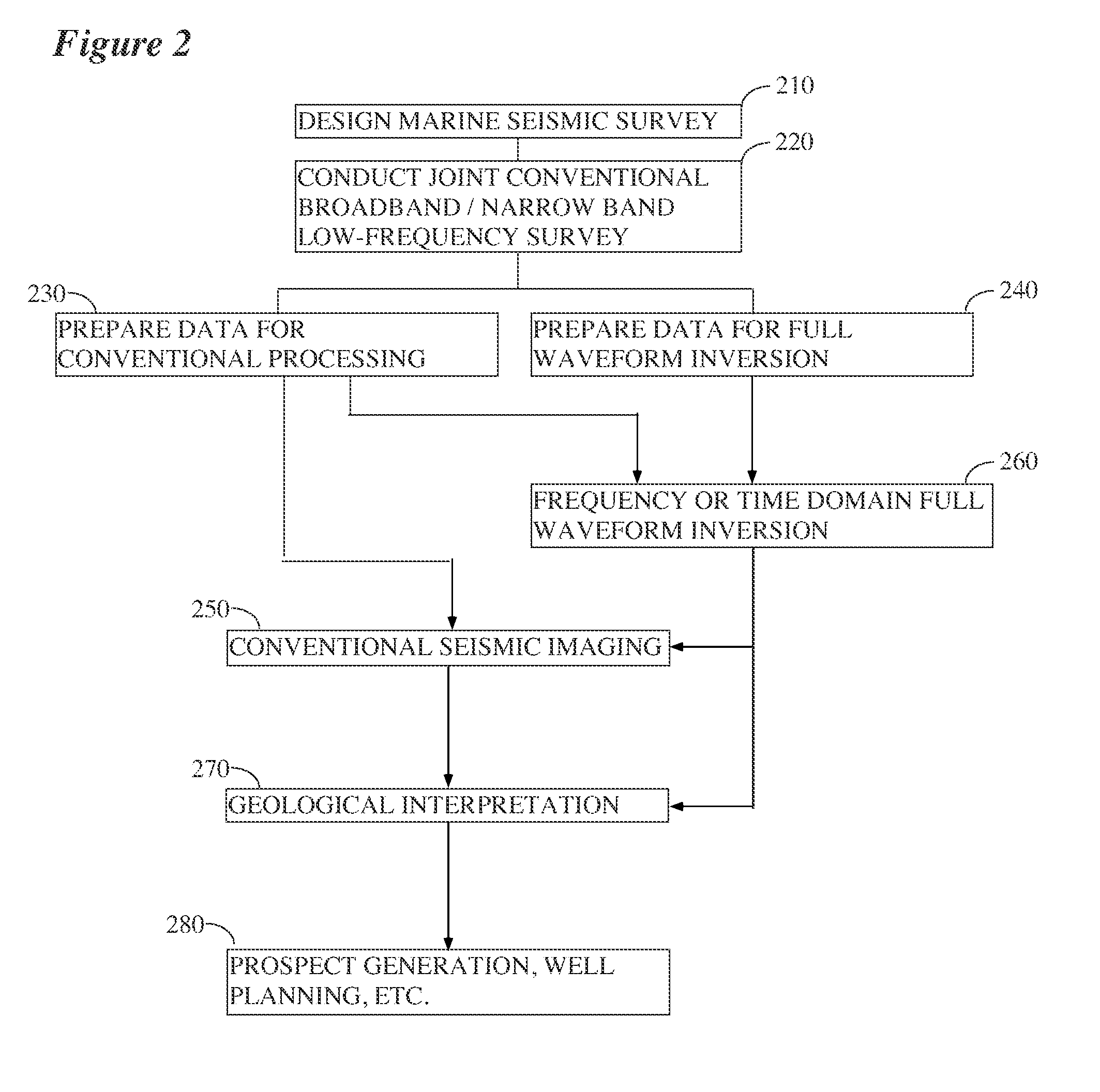Seismic acquisition using narrowband seismic sources
a narrowband seismic and acquisition technology, applied in seismicology, instruments, measurement devices, etc., can solve the problems of unnecessarily roundabout current practices when performing frequency-domain fwi on land vibrator (vibration) data, high energy consumption of traditional broadband sources, and failure of full-waveform inversion. achieve the effect of reducing crosstalk and improving the processing of narrowband seismic data
- Summary
- Abstract
- Description
- Claims
- Application Information
AI Technical Summary
Benefits of technology
Problems solved by technology
Method used
Image
Examples
Embodiment Construction
[0046]While this invention is susceptible of embodiment in many different forms, there is shown in the drawings, and will herein be described hereinafter in detail, some specific embodiments of the instant invention. It should be understood, however, that the present disclosure is to be considered an exemplification of the principles of the invention and is not intended to limit the invention to the specific embodiments or algorithms so described.
Illustrative Example Embodiments of the Invention
[0047]FIG. 1 illustrates a marine acquisition geometry suitable for implementing the instant invention. In some embodiments, a seismic survey will be conducted in the ocean 100 over a subsurface target of geological interest 126 which lies beneath the seafloor 125. A boat 110 floating on the ocean surface 120 will tow a conventional airgun array 140 and a streamer 130 of receivers, e.g., hydrophones 132. These components comprise the “conventional broadband acquisition” portion of the survey ...
PUM
 Login to View More
Login to View More Abstract
Description
Claims
Application Information
 Login to View More
Login to View More - R&D
- Intellectual Property
- Life Sciences
- Materials
- Tech Scout
- Unparalleled Data Quality
- Higher Quality Content
- 60% Fewer Hallucinations
Browse by: Latest US Patents, China's latest patents, Technical Efficacy Thesaurus, Application Domain, Technology Topic, Popular Technical Reports.
© 2025 PatSnap. All rights reserved.Legal|Privacy policy|Modern Slavery Act Transparency Statement|Sitemap|About US| Contact US: help@patsnap.com



